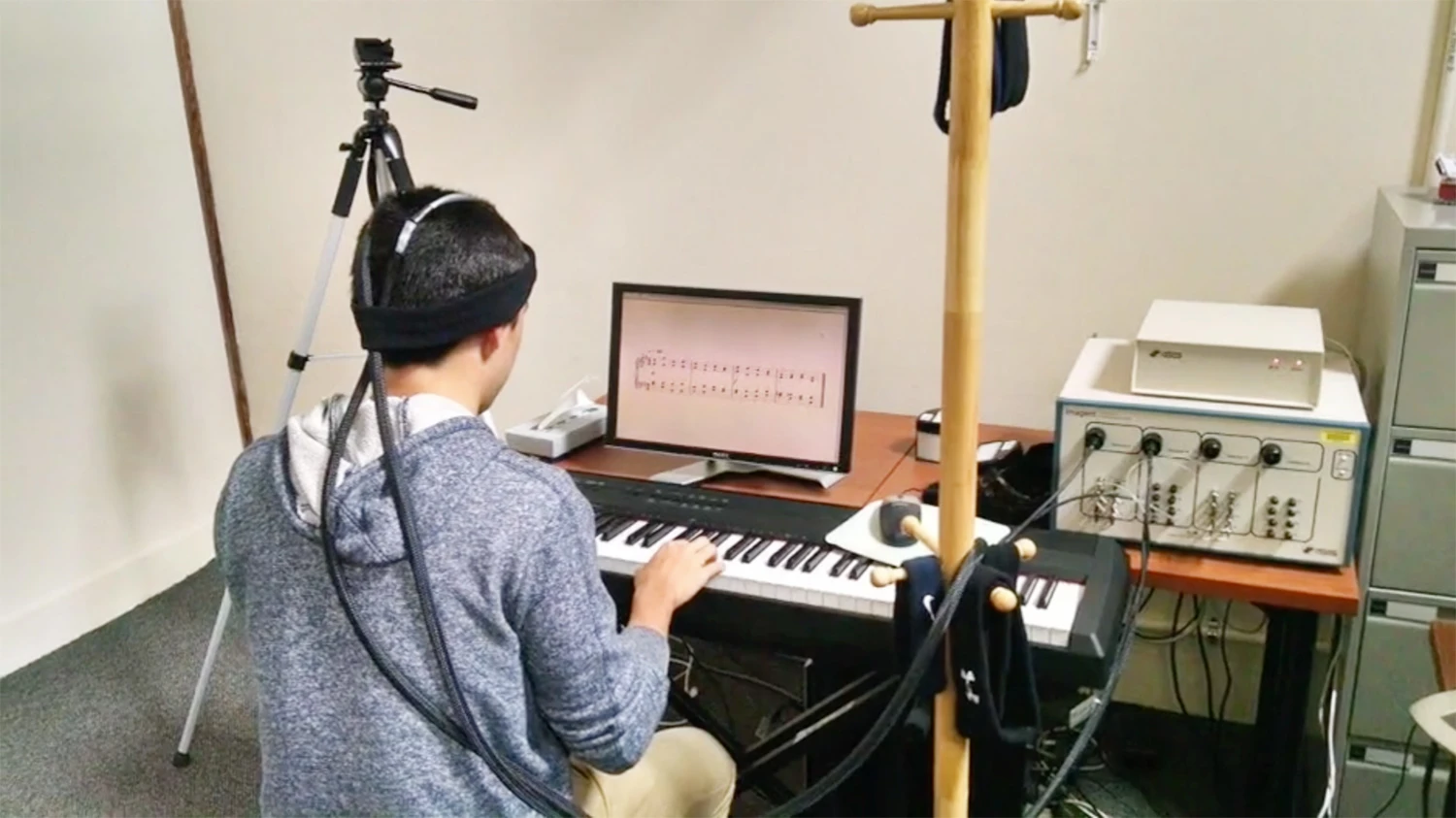Beste Yuksel could soon put a lot of piano teachers out of work.
The Ph.D candidate at Tufts University in Massachusetts has created a tool that helps students learn the instrument faster and with more accuracy than they would under the watchful eye of a traditional teacher, or while practicing on their own. Called BACh, for Brain Automated Chorales (and an obvious nod to one of history’s most prolific composers), the system has one major advantage over human teachers: It can read your brain.

“BACh is an example of where we hope the future of brain-computer interfaces go,” Yuksel says. Before pursuing her Ph.D at Tufts, she first got two master’s degrees, one in computer science and the other in neuroscience. Now she’s interested in where those two topics intersect. “My hope is that brain-computer interfaces are used by everybody every day, and that it helps their quality of life,” she says.
The BACh system measures something called “cognitive load,” which is a fancy term for how much mental exertion is required to learn something new. The traditional method for learning the piano is one hand at a time. Once a student can get through a line on the right hand, they move on to the left hand. But there’s no way to tell how hard their brain has to work to get through that line. Some people might breeze through it quickly, and their cognitive load is low, which means they’re truly ready to move on. Others may have to work really hard, so their cognitive load is heavy, and they’re at risk for mental exhaustion. “That could indicate that they’re overloaded and you need to decrease the amount of information,” Yuksel explains.

When we learn something new, we’re kind of operating in the dark with regard to how well our brains are actually absorbing the information. We could overwork ourselves and not realize it. It’s only when we show up for an exam or have to perform that new piece of music that we know if all that practice actually worked. “It’s very hard for people to be self-reflective about their own cognitive state and workload,” Yuksel says.
An observant teacher might be able to tell when a student is ready to learn new material, but a computer can do it much better by actually peering inside their brain. BACh users wear special sensors attached to their foreheads that measure blood flow in the prefrontal cortex, which serves as the brain’s control center for higher cognitive functions like multitasking, decision making, and short-term memory. “When you think,” Yuksel explains, “your heart pumps more blood and more oxygen to that part of the brain.”
Based on blood flow, BACh can tell how hard a student’s brain is working, and only releases a new line of music once the learner’s cognitive load is light, indicating they’ve mastered the first line with ease. And so far, the technology proves really promising. In one study, people who learned new songs using BACh played more correct notes and made fewer mistakes than those participants learning on their own. They also played the piece faster than the control group. And these weren’t experts—Yuksel only recruited beginners for the study.
“It’s the first time we have this objective physical measurement of cognitive load that helps people learn in real time,” Yuksel says. Now she and her adviser, Robert Jacob, a professor of computer science, are working on using BACh to measure emotions as well as cognitive load. “For example, if frustration or anxiety are high while workload is high, it could indicate they are overloaded,” she says. “Then I would decrease the amount of information or offer to help.”
While we’ve got some work to do before we can plug our brains into a computer and download information, Matrix-style, Jacob envisions a future where our devices come with built-in mini-BACh systems that work with a wearable, so students can track their own mental load. In fact, his colleagues in the electrical engineering department are already working on prototypes. “Imagine this attached to your phone or Google Glass,” he says. “There’s nothing preventing this. It’s doable.”
For Yuksel, piano is just the first of many possible applications. She says BACh could be used to teach almost any new skill, from math to foreign language. “You could design the system however you want,” she says. “If you were teaching little kids how to read, you could start with the letters of the alphabet and build onto two-letter words. As long as it’s a task that can be broken down into different levels of difficulty, you can increase the difficulty as cognitive load falls below a certain threshold. You could design for little children up to graduate-level electrical engineers. This system is a first step, but a powerful one.”
Recognize your brand’s excellence by applying to this year’s Brands That Matter Awards before the early-rate deadline, May 3.
